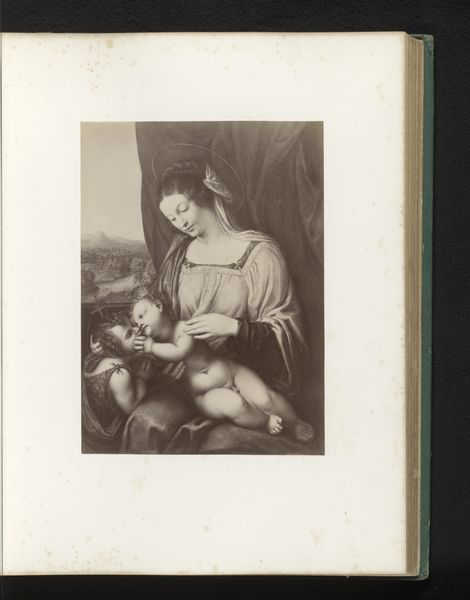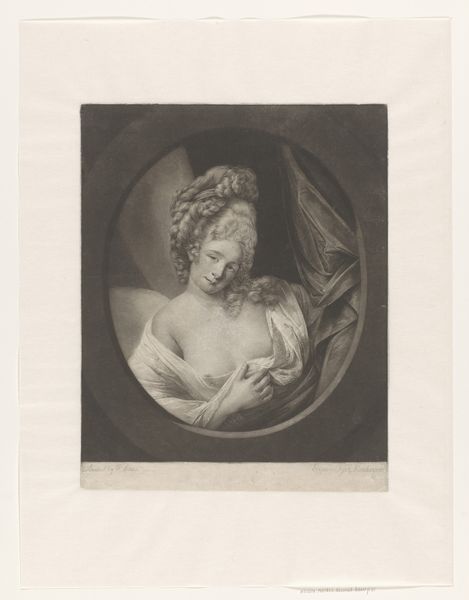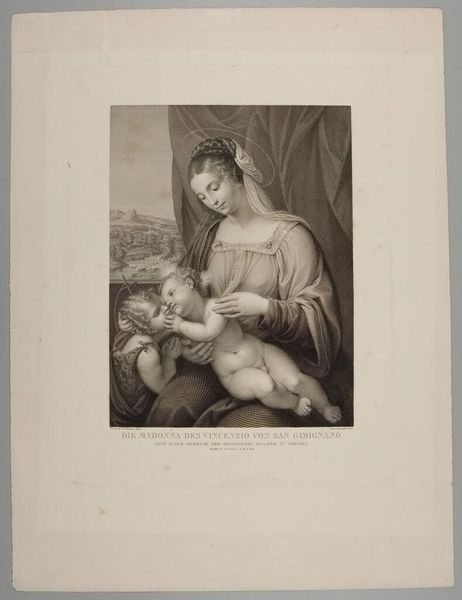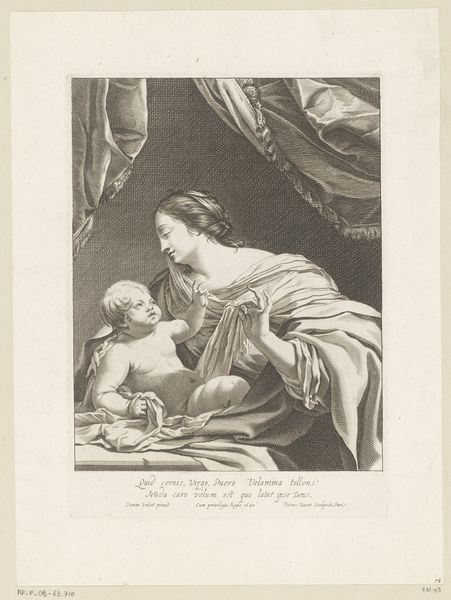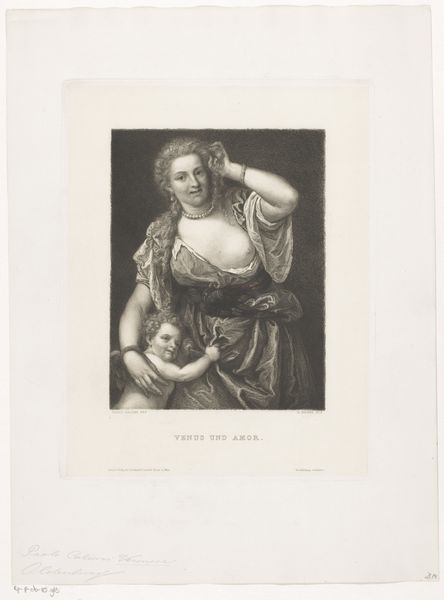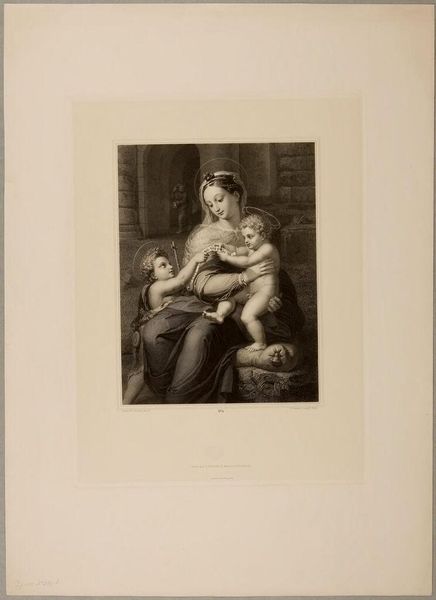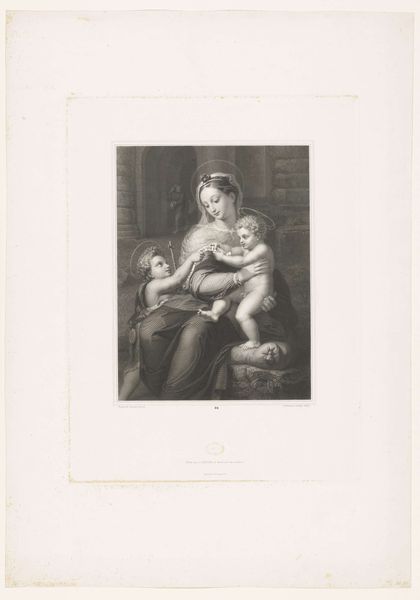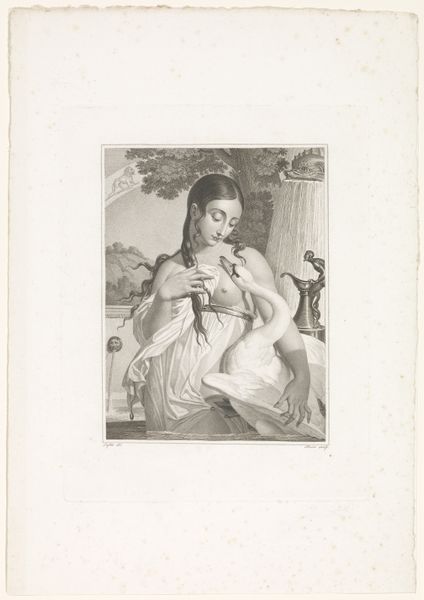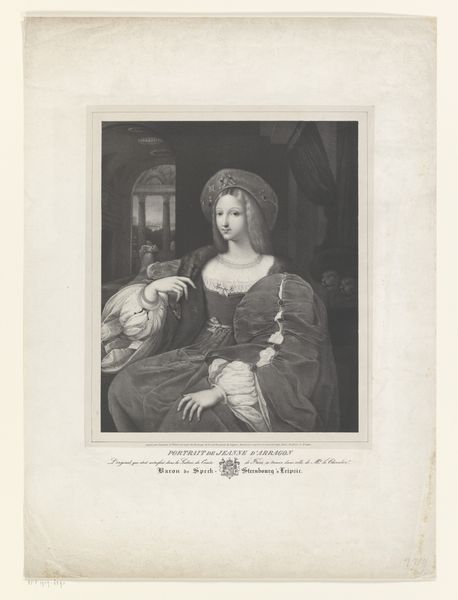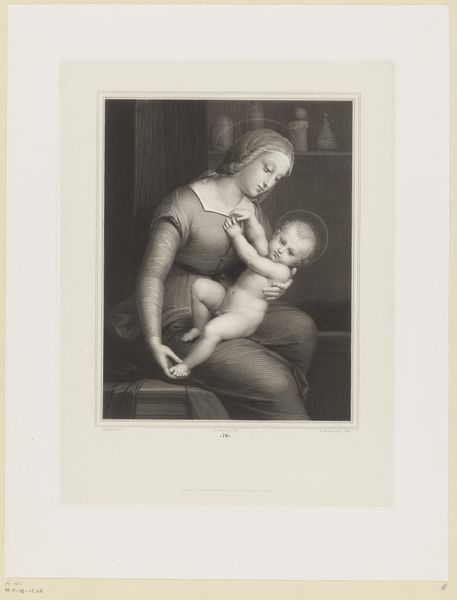
print, engraving
#
portrait
#
print photography
# print
#
figuration
#
history-painting
#
academic-art
#
engraving
Dimensions: height 462 mm, width 340 mm
Copyright: Rijks Museum: Open Domain
Curator: We’re looking at "Samaritaanse vrouw bij de waterput", or "Samaritan Woman at the Well," an engraving by Jean-Baptiste Meunier from the 19th century. The piece depicts a biblical scene. Editor: It has such a wistful mood, doesn't it? There's something so delicate in the way Meunier captured her expression, as if she’s caught between worlds, maybe a touch burdened. Curator: The well is a potent symbol in many cultures, a meeting place and source of life. It signifies not only sustenance but also community and the exchange of ideas, almost acting as a portal. In biblical narratives, encounters at wells often herald significant turning points or revelations. Editor: It certainly raises questions about who has access to those vital resources, then and now. The well in this engraving could symbolize the intersection of public and private spaces, where women’s labor and social interactions become visible and crucial. The exchange between Jesus and the Samaritan woman challenged social norms, as it was unconventional for a Jewish man to speak with a Samaritan woman. Curator: Precisely. Her gaze avoids direct contact, but there is an exchange happening with the audience, too, a reflection on the changing power dynamics of that exchange between social outcasts and the promise of spiritual equality. Editor: Absolutely, but consider this: engravings, as a medium, made religious imagery accessible to a broader audience. This democratization allowed for personal interpretations and engagement with biblical narratives outside of traditional ecclesiastical settings. Curator: This piece also taps into enduring visual narratives, echoing classical artistic compositions but filtered through a nineteenth-century lens. It recalls Renaissance ideals but grounds it in a more personal, contemplative space. Editor: For me, this engraving acts as a catalyst, opening up conversations around identity, gender, and religious dialogue. It's a prompt to re-evaluate power structures, inviting a deeper, intersectional understanding of history. Curator: Reflecting on Meunier's "Samaritan Woman", I find it fascinating how he captured this blend of introspective spirituality and cultural exchange through such a humble print. The engraving process itself serves as a perfect metaphor for transformation and transmittal. Editor: Yes, I agree. I came here seeking something totally new and discovered a reflection on something very ancient!
Comments
No comments
Be the first to comment and join the conversation on the ultimate creative platform.
